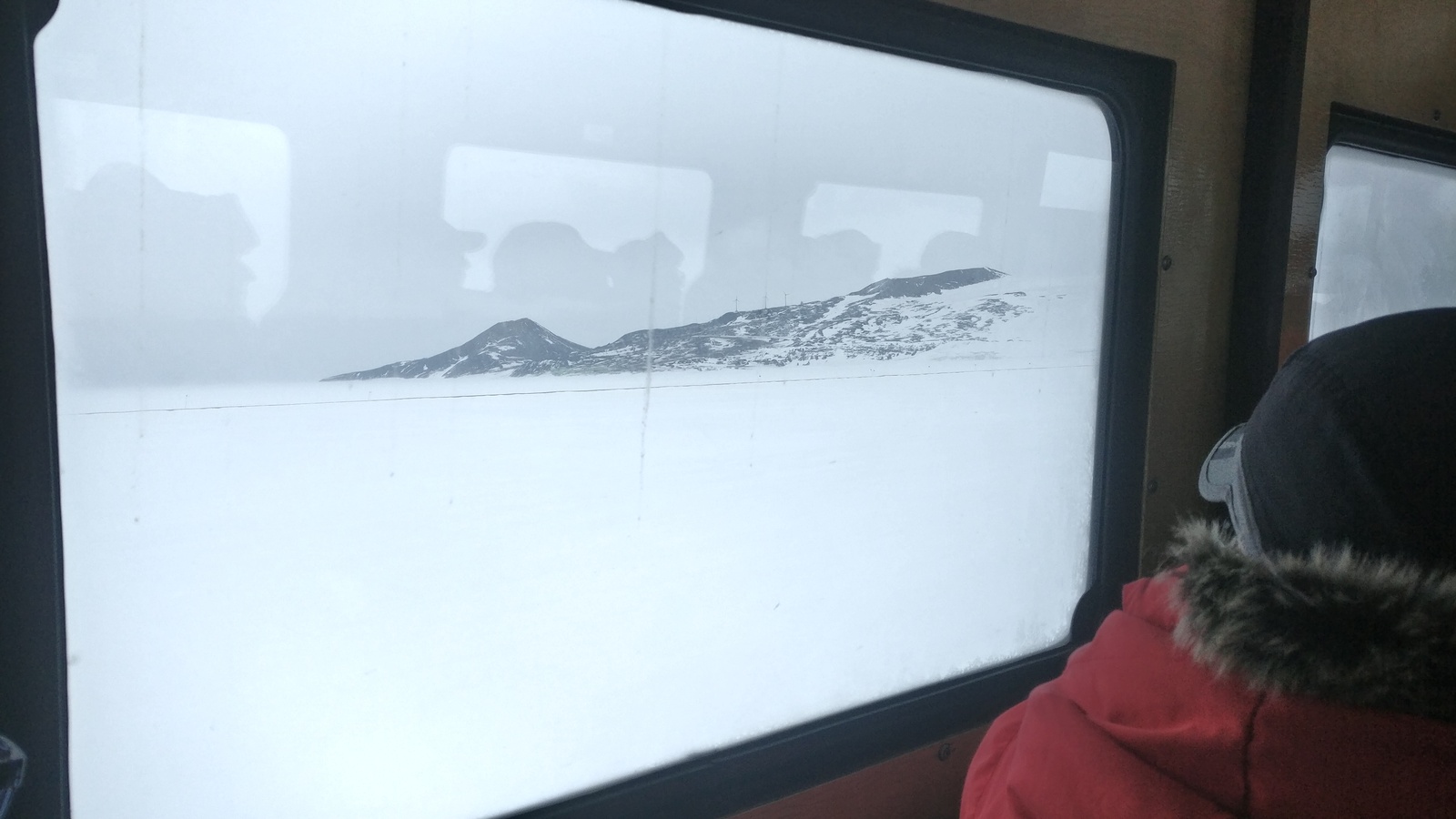The adventure is in full swing now that I've made it to Antarctica! It is a very impressive system the US Antarctic Program has set up for moving people and supplies south. We are flown on the airlines to Christchurch (NZ) which is the major logistical hub for the USAP research effort in Antarctica. Everyone goes through Christchurch, unless you are going to Palmer Station. Those folks go by boat from Chile, although that is a much smaller facility. It is, however, very well situated for marine biology, as it is located fairly far north on the Palmer Peninsula. McMurdo, however, is much farther south and during the summer the station population can swell to more than 1000 people. This is the main research station that is also a jumping off point for most of the USAPs research that happens elsewhere on the continent, including the South Pole.
McMurdo is located on Ross Island in the Ross Sea, ideally situated for receiving equipment from ships and icebreakers, as well as large aircraft like the C-17, which can land on the sea ice due thanks to its hard surface, unlike elsewhere inland where the ice is too soft on the top layer for any aircraft without skis. To get there, the first stop is Christchurch.
The day after arriving in Christchurch you report to the Clothing Distribution Center (CDC) and collect your extreme cold weather gear, known to us as ECW. This is where we get issued our famous red parkas, known affectionately as "Big Red". If all goes well, the day after clothing issue is the flight to McMurdo on a C-17. Christchurch is the last opportunity for enjoying the sights, smells, and textures of vibrant plant and animal life. I had the better part of a day and a half of free time, and did what I could to take it all in. The Botanic Gardens are excellent and I visited there twice. Our flight to McMurdo was delayed, so a few of us rented a car and drove out to Akaroa, which is a beautiful seaside town nestled into the eroded remains of a large volcano caldera. The twisting roads and verdant hillsides are spectacular. Not recommended for those who get carsick.
We were able to catch our C-17 to McMurdo after a one day slide. The flights to and from Antarctica are subject to frequent delay. Poor visibility and high winds are often at fault for delay or cancellation of a flight. There is also a limited number of aircraft available for moving people and goods. In the event of a mechanical issue, it is not always possible to take another aircraft like with the airlines. However, the professionals in the US Air Force and New York Air National Guard get people in and out safely and efficiently, especially considering the harsh remoteness of the continent. The flight is about 5 hours long. A C-17 is pretty comfortable, but the cargo bay is a very noisy place to be. It is a huge aircraft, with four large turbofan engines and lots of room for cargo. A gigantic tractor with wheels 5 feet tall shared the cargo baywith us. Takeoff performance was impressive, as I imagine the load was relatively light for this aircraft. Sitting in the jump seats along the side of the fuselage, the acceleration down the runway tugged at me strongly sideways, and was followed by a very steep angle of climb, much more aggressive than a full commercial jet.

When we hit the runway on the sea ice near McMurdo, the weather was foggy so the views of the mountains and Ross Island were obscured. At the field the famous "Ivan The Terra Bus" was there to greet us and drive us up to the station. It is very slow.

After a brief orientation keys to dorms are issued and everyone is sent on their way to get settled in and check into their work stations. I arrived in the evening, and spent a little bit of time checking out the bars and coffee hut before getting some much needed rest. Scheduled departure time was 6:30am the following morning via an LC-130 to pole.